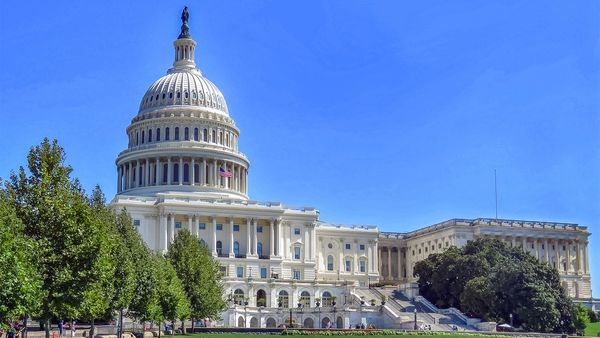Note: Here in the link to IBD's report on December CPI inflation data.
It's easy to forget now that last month's two-day Federal Reserve meeting didn't get off to an auspicious start on Dec. 12. Release of the consumer price index showed a 0.3% monthly rise in core prices, initially sending the 10-year Treasury yield a bit higher and the S&P 500 a bit lower.
It was the producer price index the next morning that provided the fuse for that's day's fireworks. The headline PPI didn't matter as much as a few key items that feed into the Fed's primary inflation rate. After economists crunched the data, they quickly reached a conclusion that the PCE price index would show less than a 0.1% rise in core prices.
The good inflation news led Fed committee members to give a more dovish tilt to their projections and gave chair Jerome Powell the confidence to signal that the Fed would be proactive in cutting rates to nail a soft landing for the economy.
"We're aware of the risk that we would hang on too long," Powell said. "We're very focused on not making that mistake."
By the end of the day, the 10-year Treasury yield had tumbled 18 basis points to 4.03%, while the S&P 500 powered ahead 1.4% to a new 52-week high.
PCE And CPI Inflation Data Diverge
November's divergence between the core CPI and core PCE was particularly wide, but it's been a trend. The 12-month core CPI inflation rate has eased to 4%, while core PCE inflation has fallen to 3.2%.
On a six-month basis, the divergence is even more dramatic. The core CPI has eased to 2.9% at a six-month annualized rate, while core PCE inflation is running at 1.87% — below the Fed's 2% target.
With inflation having fallen so far, so fast, there's some risk that the next batch of data won't be quite so favorable.
CPI Forecast
The CPI for December, out Thursday at 8:30 a.m. ET, is forecast to rise 0.2% after a 0.1% gain in November, according to Econoday's consensus. The 12-month headline inflation rate is seen ticking up to 3.2% from 3.1%.
The core CPI, which strips out food and energy prices, is seen rising 0.2% after November's 0.3% increase. However, the range of forecasts is from 0.2% to 0.3%, suggesting that a surprise is more likely to be on the higher side.
Still, economists are betting that the core CPI inflation rate will slip to 3.8%. That would be lowest since May 2021.
We'll get a good idea if the inflation measures will continue to diverge with the release of the producer price index on Friday at 8:30 a.m.
Wall Street expects the PPI to show that wholesale prices rose 0.2% in December, both overall and excluding food and energy.
However, economists will key in on a few components of the PPI that feed directly into the PCE price index. That includes portfolio management fees, health care services prices and airfares.
CPI Vs. PCE
Portfolio management fees tend to move with stock prices, so they're likely due for an increase. Deutsche Bank economist Brett Ryan noted in a preview that portfolio management alone could add 0.1% to the monthly increase in core PCE prices.
Among the biggest differences between the CPI and PCE is their measurement of health care services prices. In November, the CPI showed medical services prices up 0.6%, while the PCE measure rose just 0.15%. Part of the divergence is because the PCE includes prices for purchases that the consumer only pays for indirectly, such as employer payments for employee health care. That difference helps explain why health care services account for just 6% of spending covered by the CPI but 16% of spending covered by the PCE price index.
S&P 500, Fed Rate-Cut Impact
Ahead of the CPI and PPI reports, markets are pricing in about 70% odds of a rate-cut by the March 20 policy update. Markets are pricing in 60% odds of a full 1.5 percentage points in rate cuts for 2024.
Deutsche Bank's Ryan notes that PPI data on Dec. 13 "substantially influenced policymakers' inflation forecasts" and the market reaction to Fed policy signals. "Hence, any (inflation) surprises that run contrary to the Fed's near-term expectations could significantly impact market pricing for the near-term policy path."
On Wednesday, the 10-year Treasury yield is unchanged at 4.02%, about where it was after the Fed and markets reacted to the November PPI report.
The S&P 500 edged up 0.3% in Wednesday stock market action, about 1% below its all-time high in January 2022.
Be sure to read IBD's The Big Picture column after each trading day to get the latest on the prevailing stock market trend and what it means for your trading decisions.







